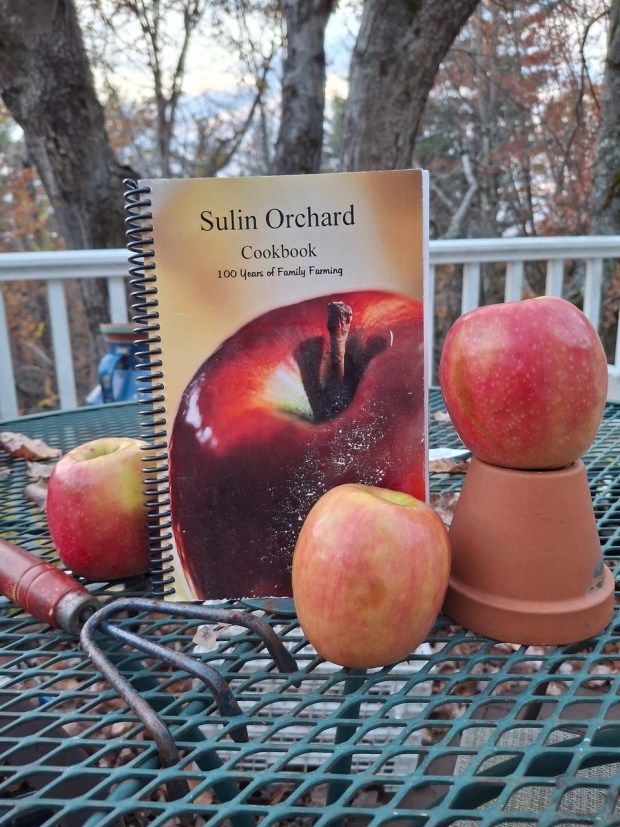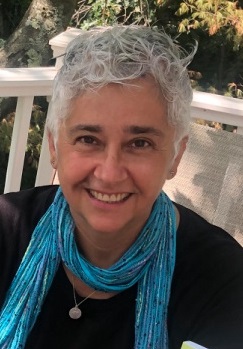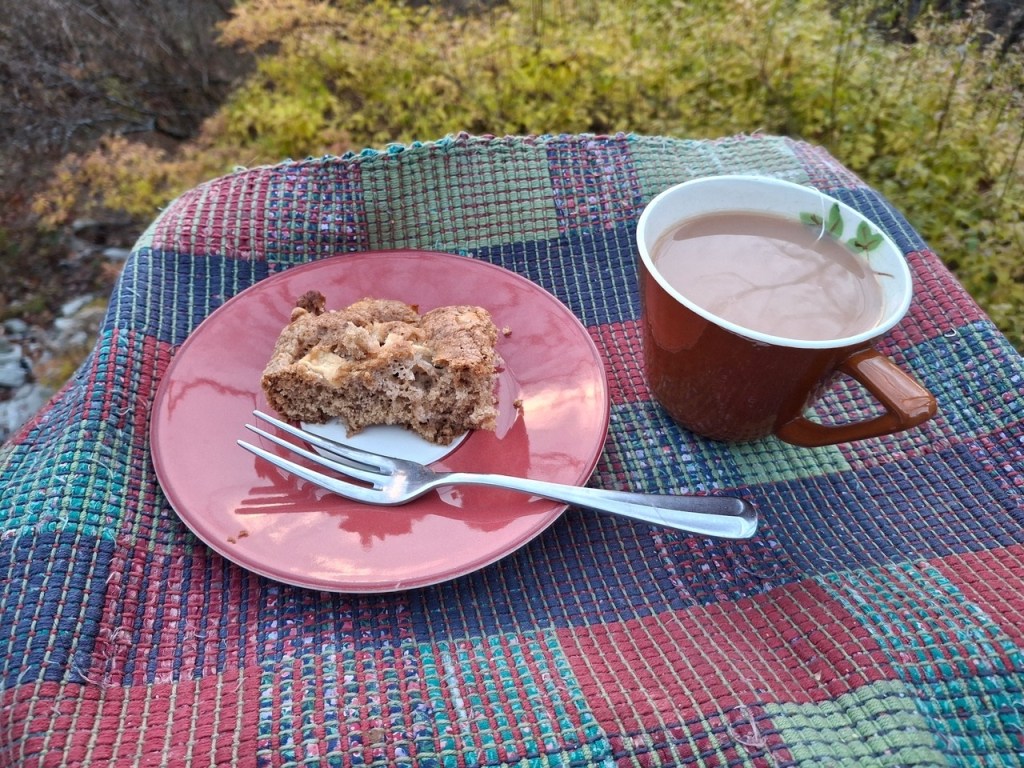We New Englanders think we invented apples, but these beloved fruits are a long way from their place of origin: the forests of what is now modern-day Kazakhstan. More than 8,000 years ago (or 400 generations from the original Neolithic hunter/gatherers) cultivation of wild apples began in Central Asia.
So, no, Johnny Appleseed is not the first — the original Johnny (or Joan) is long lost to history. However, by 1500 BCE, apple seeds had been brought west to Europe and the Mediterranean. The Greeks and Romans loved them, and one theory is that the conquering Romans brought apples (along with plumbing and paved roads) to the British isles during their period of rulership. Later, Spanish settlers brought apples to Mexico and South America.
Here in North America, small and sour crab apples grew, and the Pilgrims weren’t taking any chances with seeds — they brought apple saplings. Thirteen years later, according to “An Account of the Colony of the Lord Baron of Baltamore, 1633,” the ambitious aristocrat urged settlers to bring with them: “Kernells of Peares and Apples (especially of Pepins, Pearemaines, and Dusons) for the making hereafter of Cider, and Perry; the stones and seedes of all those fruits and rootes, and herbes, wiich he desireth to have.” Seems you can’t have an empire with an orchard.
Blame Eve and the snake
The “fruit of forbidden knowledge” has long been assumed to be an apple, (because the Latin root for apple and evil are the same: “malus”). But consider this: as soon as humans began growing apples, they began hybridizing, and experimenting with exemplars that had beautiful skins, tasty flesh, and durability. A lot of experimenting by thousands of growers results in more than 7500 varieties of apples grown across the world.
As much as we pride ourselves on our orchards and New England traditions, the reality is that the majority of apples eaten by United States residents have been grown in the Pacific Northwest, particularly Washington State.
According to the Northwest Horticultural Council, “the top varieties are Red Delicious (34%), Gala (19%), Fuji (13%), Granny Smith (12%), Golden Delicious (10%), Cripps Pink (3%), Honeycrisp (3%), Braeburn (3%), and 3% ‘Other’ (according to Bestapples.com).
Notice there is no McIntosh, no Macoun nor any Cortlands? The great cider and pie apples of New England are missing from the national round-up. But here in the region, we can’t get enough of apples, and if there’s anyone that everyone agrees on, it’s that Johnny Appleseed, born John Chapman, was pretty darn amazing.
‘Go West, Young Man’
Here’s local historian/author Mark Bodanza on this local hero. Bodanza wrote a splendid book: “Johnny Appleseed: The Man Behind the Folklore” which captures his unique qualities: “Born in Leominster, Massachusetts on the eve of the American Revolution, he was a man who heeded the westward call of the frontier, something that fit particularly well with a personality often described as a bit quirky. He set about the frontier on a mission that not only included propagating apple seedlings but also spreading deep seated religious beliefs along and his mindful way of life.”
At Leominster’s Sholan Farm you can visit the “Rambo” trees, descendants of the last surviving apple tree planted in Nova, Ohio, around 1840 by Johnny Appleseed. Diane Burnette, now-retired manager of the Johnny Appleseed Visitor’s Center on Route 2, explained on an episode of Channel 5’s Chronicle last year that these fruits “are very tart and were mainly used for cider and vinegar.”
Visit markbodanza.com to learn more about Johnny Appleseed.
Sholan Farms, 1125 Pleasant St., Leominster is open on the weekends through November, 11 a.m. to 3 p.m.
It’s All in a Name
Researching this topic, I found that numerous individuals had apples named after them. Which apple is not an actual apple name? Answer at the end of column
a) Adam’s Apple b) Detroit Red b) Nova Spy c) Eve Apple d) Westfield Seek-No-Further
Just sweet enough
The “Sulin Orchard Cookbook — 100 Years of Family Farming” is my only collection of recipes that focuses on one ingredient (actually, two, there’s a section on honey as well).
For decades, my friend, Dana Sulin, the late farmer/apiarist of Fitchburg maintained a glorious orchard and grew a variety of heirloom apples. I loved consulting him about apples when I was writing about fall topics. He was the first local person in our region to successfully grow the “Honeycrisp” variety. He is much missed, and I am glad to have this family recipe book and consult it whenever it’s time to make an apple dish.
 Lord “Baltamore”’s quotes are as he wrote them and were printed in this really old book. “The Sulin Orchard Cookbook” is a treasure house of appetizers, breads, main dishes and sweets, with apples as the main ingredient. (SALLY CRAGIN)
Lord “Baltamore”’s quotes are as he wrote them and were printed in this really old book. “The Sulin Orchard Cookbook” is a treasure house of appetizers, breads, main dishes and sweets, with apples as the main ingredient. (SALLY CRAGIN)
Apple Blond Brownies
INGREDIENTS:
½ cup butter
½ cup sugar
2 eggs
1 cup flour
½ teaspoon baking soda
½ teaspoon baking powder
¼ teaspoon salt
1 teaspoon cinnamon
2 cups peeled, chopped apples
DIRECTIONS:
Cream butter, add sugar and egg, mix well. Sift dry ingredients together in a separate bowl. Stir in dry to wet (I always do this one-third at a time, and use a spoon, so the flour doesn’t get stressed). Fold in apples, spread in 8” greased pan. Bake at 350 degrees for 40 minutes.
Notes: Let the eggs and stick of butter sit on the counter for at least a half hour to get to room temperature. Then cut butter into tablespoons before you begin the creaming process. The resulting dough is very stiff — more like a cookie dough, so take time spreading into your prepared pan. I chopped my apples the size of dice in a Monopoly game. I also halved the sugar by accident (originally, it was one cup), but the apples (I used Honeycrisp) definitely sweetened this dish. The Sulin family “recommend that you try using more than one variety [of apple] in your recipe. The result can be a greater depth of flavor and interesting texture to the dish. “
Apple Quiz Answer
There are two varieties named after Eve, but the only “Adam’s Apple” you’ll find are in the throats of males post-puberty.
In addition to the major varieties, there are “boutique” varieties found only in specialty stores or fruit stands and club varieties grown by select growers. Below is a thumbnail gallery of the most common PNW varieties arranged by relative harvest timing. Clicking on an image will open the full description window. (List of varieties came from the Washington State Apple Commission.) Apple production facts can be found on the’s website.
Sally Cragin is an award-winning journalist and reachable by talk or text at 978-320-1335.
 Sally Cragin is an award-winning writer/journalist and Fitchburg City Councilor-at-Large. (CHERYL CUDDAHY)
Sally Cragin is an award-winning writer/journalist and Fitchburg City Councilor-at-Large. (CHERYL CUDDAHY)


Dining and Cooking